Three new iPhones reviewed: Faster, bigger, cheaper
The iPhone X is dead. Long live the iPhone X!
What I mean by that, of course, is that the new 2018 iPhones are named (and designed) to be tuned-up versions of last year’s iPhone X. There are three of them: one faster, one bigger, and one cheaper.
Here they are:
iPhone XS. Incredibly, Apple capitalizes it like that—XS—but somehow expects people to say “10 S” instead of “excess.” Anyway, this model is last year’s iPhone X—same size, price, and screen—with some upgraded components, as described below. Costs $1,000 to $1,350 (for 64 to 512 gigabytes of storage—yes, 512 gigabytes, which is laptop territory).
iPhone XS Max is the exact same thing, but bigger. It’s basically the size of past year’s Plus models—but because Apple eliminated the margins above and below the screen, the screen is much bigger. For something that’s 6.5 inches diagonal, the Smax (as some are calling it) feels surprisingly small in the hand. Maybe that’s because it gains its area mostly in height, not width. It costs $1,100 to a staggering $1,450.
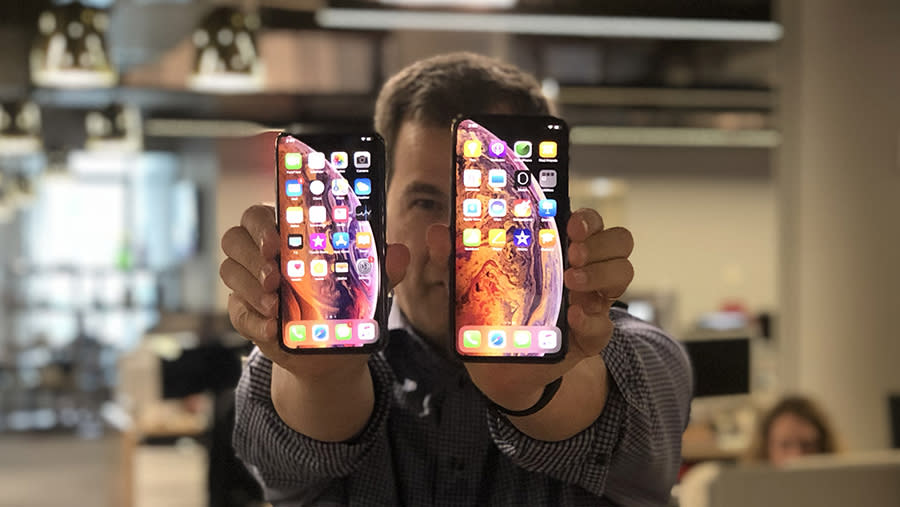
iPhone XR. The R could stand for “reduced price” ($750 and up) or “rainbow colors”—it’s available with a back panel in black, white, red, yellow, coral, red, or blue. Then “10 R”’s size is halfway between the XS and the Max. Yes, it’s 25% less expensive, and most of what you sacrifice, you probably won’t miss: it comes with a fantastic LCD screen (rather than OLED technology) and doesn’t have a Force Touch (pressure-sensitive) screen. The only painful loss is iPhone X’s dual lenses on the back, one of which is a 2X zoom.
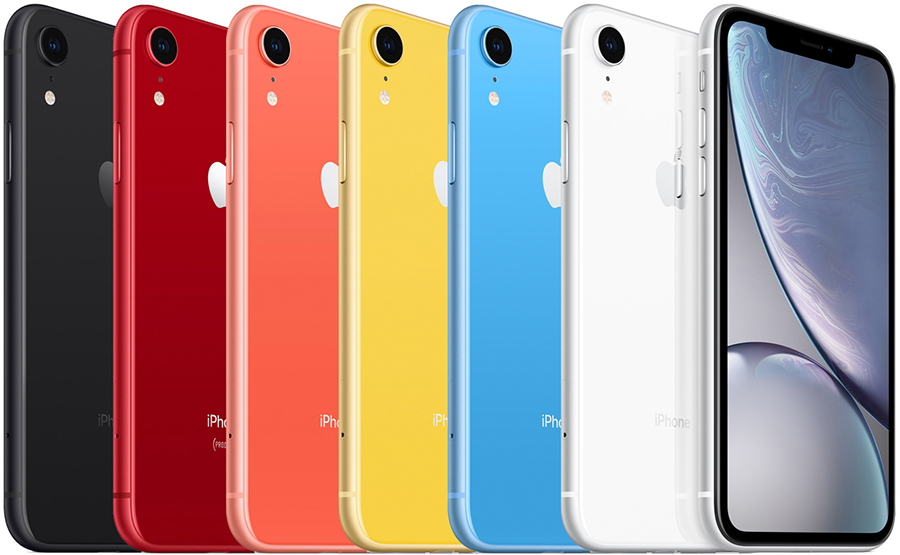
Those are insanely high prices; that’s the way phones are going these days (see also: Samsung and Google). But it’s worth pointing out that Apple is keeping the iPhone 7 and 8 models alive, for a lot less money: $450 and $600, respectively.
The “cheap” one, the XR, won’t be available until October, and Apple didn’t provide samples to reviewers. It did hand out some beautiful, shiny new XS and XS Max phones for reviewers to try.
What’s new
If you had to describe new X-class phones, you’d use a lot of the same language people used last year to describe the iPhone X:
All screen. There’s no empty space above or below the screen. More screen, less phone. Better yet, the XS models are OLED screens—the stunning colors and deep blacks (million-to-one contrast ratio!) of organic LED technology. And oh, man, on that XS Max model—that much OLED is truly glorious when you’re looking at movies and pictures. Of course, this means the controversial “notch”—the gap in the top edge where the cameras and sensors hide—is on all three of the new models.
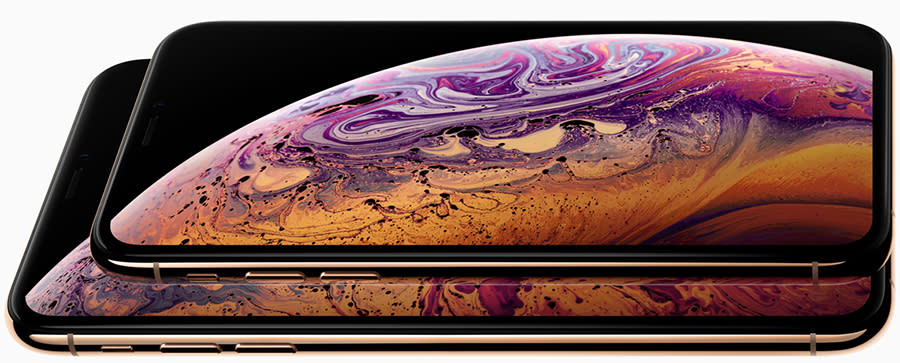
No home button. You use various swipes and side-button presses to perform the functions of the old Home button. Here’s my complete list of the new gestures.
Face ID. No more fingerprint reader. Instead, the phone has a face scanner that unlocks the phone when it recognizes you. Apple says that it’s faster on the new models, but it was exactly the same as the iPhone X in my tests. In iOS 12, released on Monday (here’s my review), you can train your phone to recognize a second face.
Wireless charging. “Wireless charging” these days means putting your phone on a special charging pad instead of plugging in a power cord. Apple uses the same charging standard that Samsung and other companies use, called Qi (pronounced “chee”). You can use any company’s Qi charger; for example I like one from Anker, which simultaneously props up your phone so you can use it as a clock or watch a video. (Over a year ago, Apple said that it was developing a charging pad of its own, but it never came out, and has been mysteriously deleted from the Apple website.)
The iCamera
You won’t find much in the way of new capabilities or features in these phones. It’s all under the hood—and a lot of it is about photography.
I’m not sure why we even call these things phones anymore; the last thing most kids do with their phones is talk into them. Really, a better name for the iPhone would be iCamera. It is, Apple says, the most used camera model on earth.
Apple made some small changes to the wide-angle lens on the back (the 2X zoom lens is the same). It does better in low light.
But the bigger news is brought to you by the faster set of chips inside, now called the A12. Apps open much faster than they did on the iPhone X, videos export faster, that kind of thing. Nobody was complaining about the speed of existing iPhone models, but now app writers have some headroom for more demanding tasks in the future.
The A12’s prodigious number-crunching prowess also makes possible what Apple calls Smart HDR.
HDR has been around. It stands for high dynamic range. Turns out that a camera sensor still isn’t as sensitive as your eyeball. The sensor can’t take in as wide a range of brights to darks. So canny photographers take several photographs of the identical scene at different exposures—one too bright, one too dark, one in the middle—and then use software to combine them to produce a complete spectrum of lights and darks.
Today’s phones and cameras can do that automatically—and the new iPhones take the concept a step further, not only combining multiple exposures but performing dozens of other analysis and adjustment steps in the process.
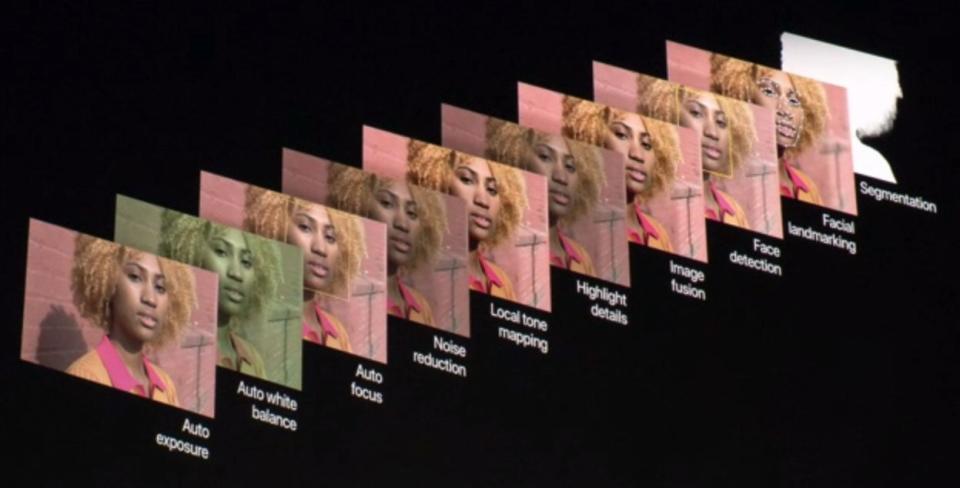
You don’t notice anything different in some shots—
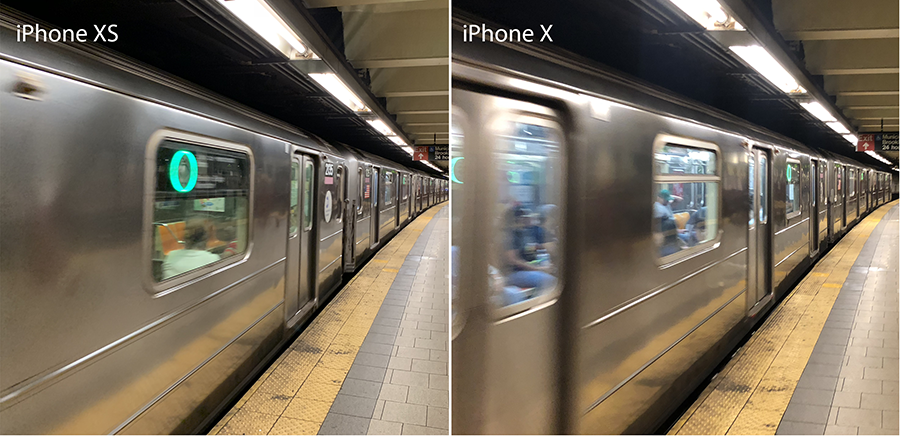
—but when there’s the potential for a blown-out sky or muddied-up dark area, there’s a big improvement. Check out the blown-out clouds in the lower photo, especially on the right:

The HDR now affects kinds of shots that the old one could not, like panoramas, shots in dim light, and action shots. Welcome to the world of computational photography (also present in the Google Pixel phone’s HDR system).
Better portraits
The iPhone 7 Plus first introduced Portrait mode, whose two-lens setup lets the camera tell the foreground subject apart from its background. With that knowledge, the phone could simulate the soft blurry-background look of expensive SLR cameras, like this:
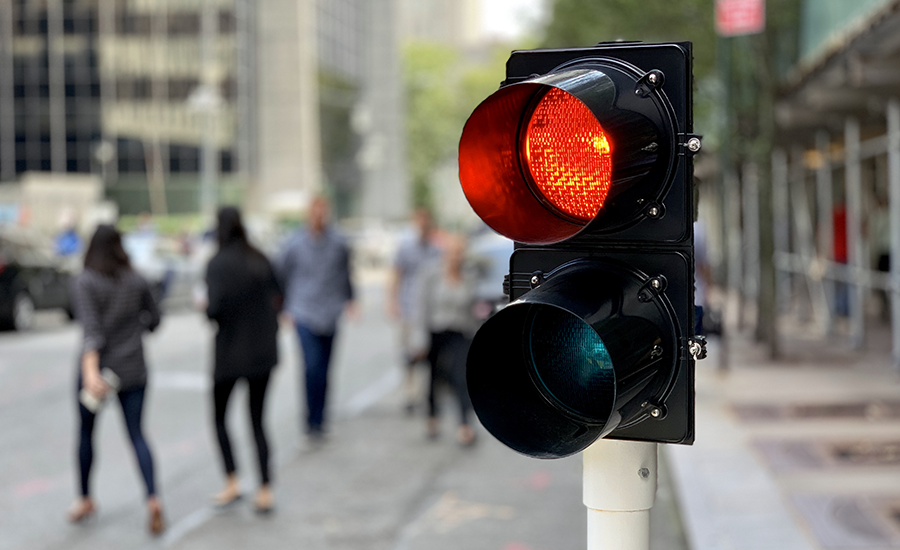
In the XS and XR phones, Apple has refined Portrait mode in two ways. First, the bokeh (the quality of the blurriness) looks more like what you’d get from high-end lenses.
Second, when you edit one of these photos, you now get a slider that lets you specify how much blur you get. It’s not a new idea—Samsung Galaxy has a similar feature—but it’s super useful, especially when the phone’s instinct is to blur out a detail (like a companion in your group).
The Portrait Mode feature is officially out of beta testing, Apple says. So it’s weird that it seems to make background-masking errors more than it used to. For example, in real life, Dion’s actual hair does not protrude in weird lumps above his ear (below, right).
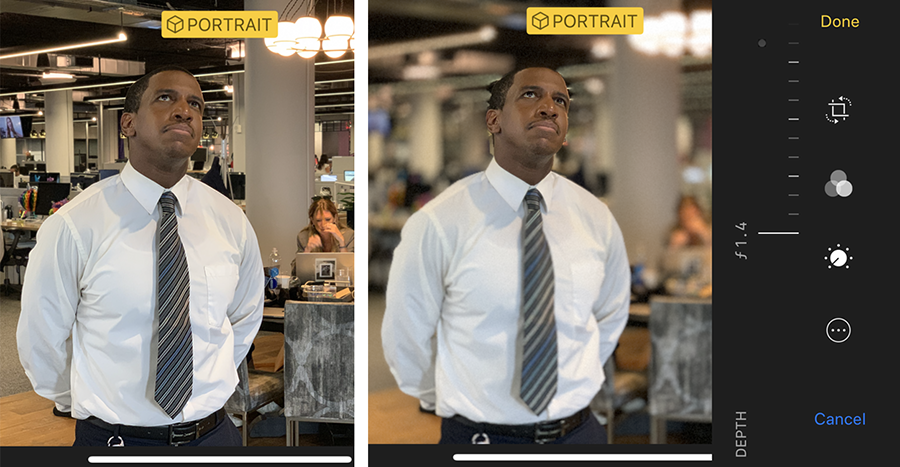
In a software update this fall, you’ll also be able to adjust the degree of blur before you take the shot.
More good stuff
Here’s what else is new:
Better waterproofing. Apple says the new phones can now withstand 30 minutes, six feet underwater. Well, fine. But Apple’s warranty still doesn’t cover water damage, even if it resulted from 10 seconds under one inch of water (my eighth grader and I learned this the expensive way). So this isn’t as great as it sounds.
Harder glass. Apple says that it worked with Corning, the creator of Gorilla Glass, to improve the front and back glass on these phones. It’s now “the most durable glass ever in a phone.” (On the other hand, glass is still glass. The Wall Street Journal’s reviewer Joanna Stern writes that her XS Max review unit “cracked after a minor fall onto wood.”)
A new color. The XS models are available with the usual black or silver stainless-steel edges, plus a new coppery gold tone.
Better battery life. Apple says the XS gives you 30 minutes more than last year’s iPhone X, and the Max gives you 90 minutes more than the 8 Plus. Early reports are that it’s true, and very welcome.
Two phone numbers. The new XS phones can each have two phone numbers for calling and texting (for example, one for work, one for personal use). There’s one physical SIM card, plus an electronic SIM. There’s some fine print here: the feature won’t be available until later this fall, and it works only if your carrier offers the feature, and it requires an unlocked iPhone. But it’s been done right; for example, you can specify which line gets dialed for each person in your Contacts. (And if you don’t, the iPhone just uses the number you used last time.)
Better sound. Not only are the stereo speakers noticeably more powerful than before, but the stereo separation is also much better. It’s not clear how often people watch movies or listen to the music without headphones these days, but when you do, the left-to-right separation will really hit you, especially when a car or a plane goes across the screen.
Stereo recording. Nobody talks about this feature very much. But for my money, it’s a big one. Having your own home movies recorded with crystal-clear stereo audio makes them much more compelling on playback.
Less good stuff
As we know, Apple (and Google) have eliminated the headphone jack from their phones—they think wireless earbuds are really the way to go. But with this year’s iPhones, Apple no longer includes the little two-inch headphone-to-Lightning jack adapter in the box.
Can you imagine spending $1,450 on a phone, and discovering that you have to pay $9 more for a dongle to plug in your favorite headphones?
And speaking of that Lightning jack: Like other recent models, these iPhones are capable of fast charging—50% charge in 30 minutes. But you have to buy a special wall wart for that; it’s not included in the box, as it is on the Google Pixel. (Apple says that’s because fast-charging transformers are bulky, and people would rather have the tiny one that comes with the iPhone.)
Apple has also killed off the iPhone SE, the last remaining model that fits smaller hands. It’s baffling to me—surely these things were selling well? I see so many of them in the wild, and they’re so beloved by their owners.
Apparently, Apple wants you to go big or go home.
The deal
It’s too bad the iPhone XR is delayed. For a lot of people, getting all the premium, top-of-the-line technologies in a $750 phone (instead of $1,000) will be a very attractive proposition. If you’re ripe for an upgrade, the XR may be worth waiting for.
As for the XS models: They’re state-of-the-art. They’re really, really great phones. (I counted no fewer than five early reviews that called the XS models “the best iPhone Apple has ever made.” That’s true, but, you know. Duh! Would Apple put out a phone that’s worse than previous models? Would anyone?)
But clearly, this is an “S” year—Apple’s traditional even-numbered year, where it doesn’t reinvent the iPhone’s design but instead just upgrades it. Usually, “S”-year models (the 4S, 5S, 6S, and so on) introduced something new—the Touch ID fingerprint sensor, for example, or Siri. This year, it’s all about better guts.
So you can look at this year’s hew phones in two ways:
“Apple has lost its mojo, man. A bigger screen? A cheaper price? More colors? They’re just rearranging deck chairs on the Titanic, man.”
“Oh, come on—that’s what all the phone companies do these days. What else are they supposed to add? These are meaningful upgrades, especially if you’re still using a phone that’s a few years old!”
Both reactions are legitimate. If you’ve got a 2017 iPhone, you have the luxury of knowing you’re not missing out on much. But if you’ve been thinking that it’s time to upgrade from an older phone, you have the luxury of knowing you’ve got the very best.
David Pogue, tech columnist for Yahoo Finance, welcomes comments below. On the Web, he’s davidpogue.com. On Twitter, he’s @pogue. On email, he’s poguester@yahoo.com. You can sign up to get his stuff by email, here.


